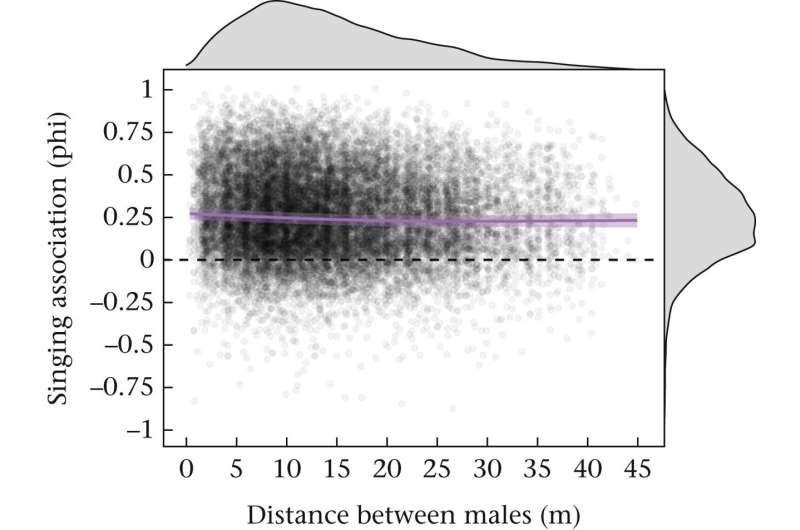This article has been reviewed according to Science X's editorial process and policies. Editors have highlighted the following attributes while ensuring the content's credibility:
fact-checked
peer-reviewed publication
trusted source
proofread
Male crickets court females in unison—unless rivals get too close

Male crickets sing in unison to attract females—but stop singing if a rival gets too close, new research shows.
University of Exeter scientists watched more than 100 male field crickets, and measured how often they chirped at the same time (called "singing overlap").
Singing by males one to five meters away from a listening male had a "stimulatory effect", leading to a chorus of crickets singing together.
However, males were less likely to sing if another cricket chirped within one meter—possibly because the territorial insects instead chose to fight these space-invading rivals.
"Courtship displays are common in nature, but we know surprisingly little about how animals tactically adjust these in response to their environment," said Joe Wilde, a Ph.D. student at Exeter's Centre for Research in Animal Behavior.
"For crickets, singing is an energy-intensive activity, and males have to decide when to chirp and when to stay silent."
"Our results reveal show that singing by other males has an impact on this decision-making process."
Wilde added, "We can't say for certain why the males tend to sing together, but a likely explanation is that females are drawn to areas with multiple males calling."
"By 'chorusing' in this way, the males all benefit."
"We also can't be sure why males sing less when others chirp within one meter, but it's likely that they choose to fight rivals that get too close to their burrow."
The researchers used data from the WildCrickets project, which continuously monitors field crickets (Gryllus campestris) in a meadow in northern Spain via CCTV cameras.
The study used over a million scan samples of 129 males over 51 days to explore how the singing and proximity of other males influenced male singing behavior.
The paper is published in the journal Animal Behaviour.
More information: Joe A. Wilde et al, Signalling males increase or decrease their calling effort according to the proximity of rivals in a wild cricket, Animal Behaviour (2023). DOI: 10.1016/j.anbehav.2023.06.006
Journal information: Animal Behaviour
Provided by University of Exeter




















